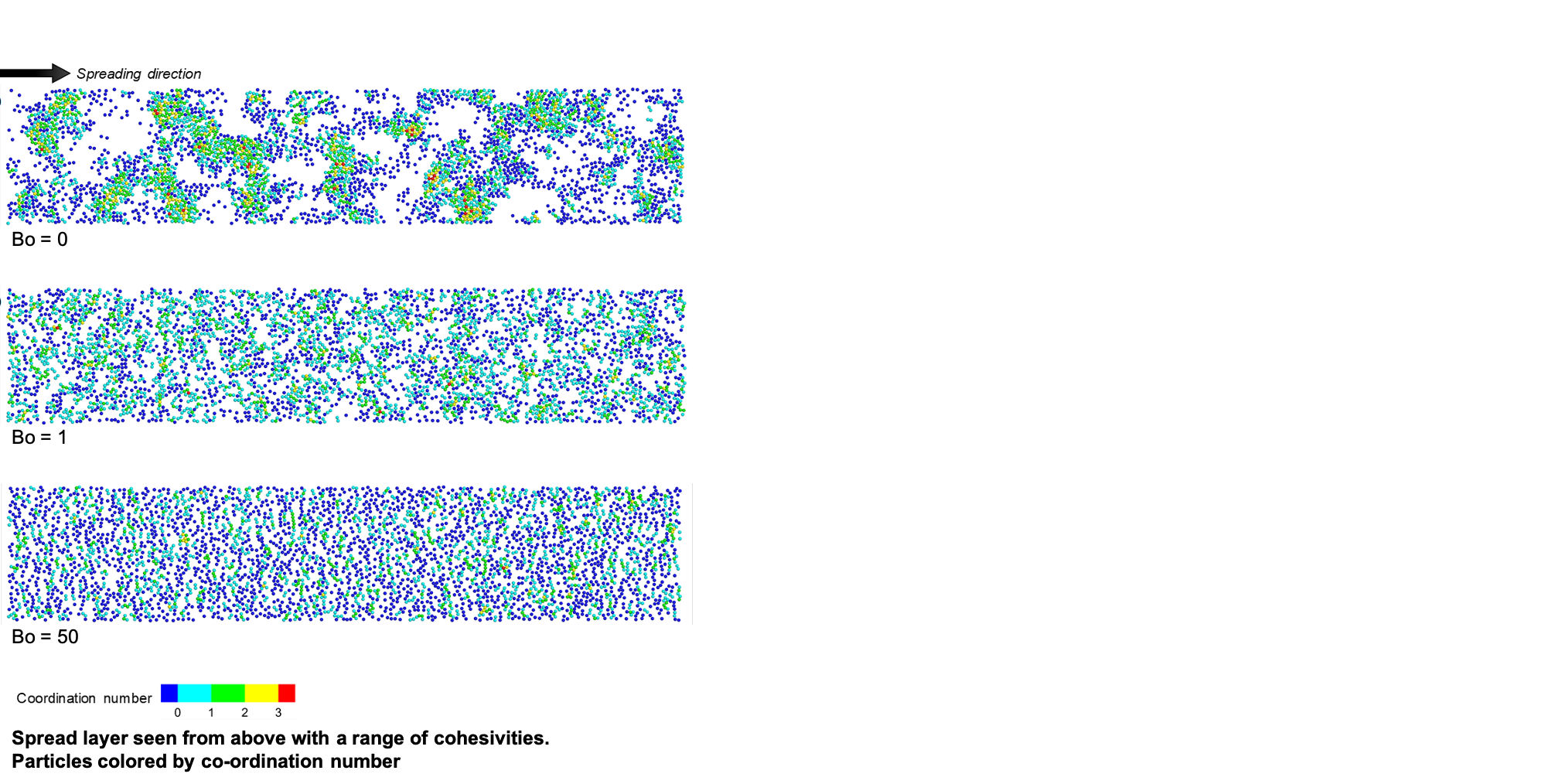2022 Annual Meeting
(38e) Understanding and Characterising the Spreading of Cohesive Powders in Powder Bed Fusion Additive Manufacturing Via Discrete Element Modelling
Authors
The validity of the method was verified for both packing and spreading of fine powders before the effect of powder cohesivity was investigated. To characterise the spread particle layer a number of alternative metrics were introduced to give insight into the layer structure, these included pore size distribution in the bed and powder cluster size distriburtions. The analysis showed that, for the conditions used, the packing density was relatively insensitive to cohesivity with particle Bond number spanning 0 to 200, however for very cohesive particles with Bo > than 200, a drop off in the bed density was seen. However significant differences in the structure of the spread layer were noted and several regimes identified. In particular, significant clustering, and less uniform spreading, was observed with lower cohesivity, flowable, powders. The mechanisms behind the observations are discussed and a dimensionless inertial number proposed to help interpret the phenomena observed.
The method provides a valuable tool and metrics to quantitatively evaluate the quality of a spread powder layers, but also enables a better understanding of the physics underlying the spreading of cohesive fine powders.
[1] Y. He et al., 2021, Applied Mathematical Modelling 90, 817-844
